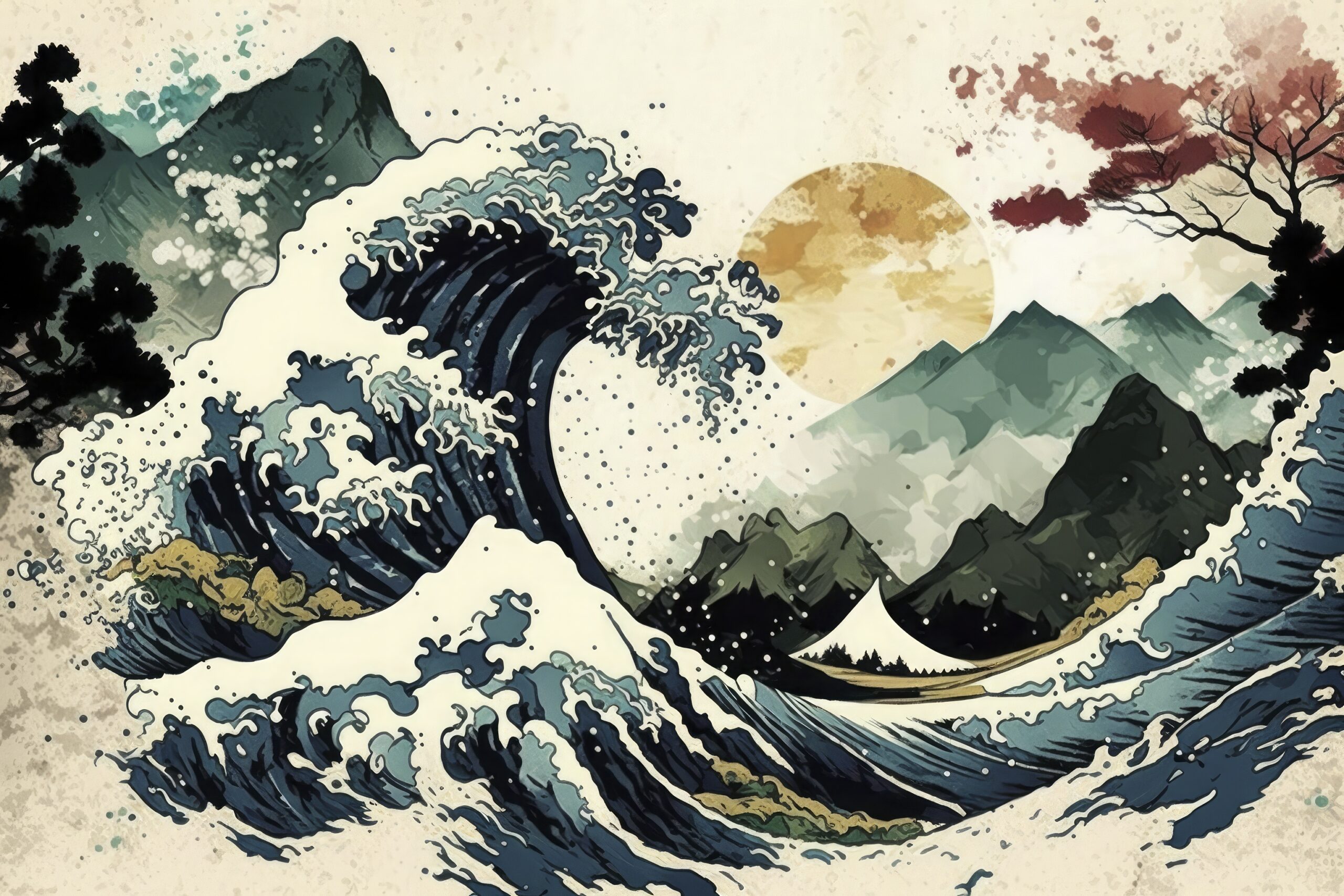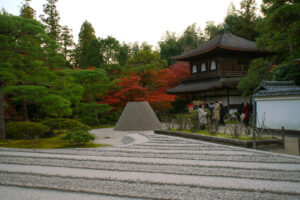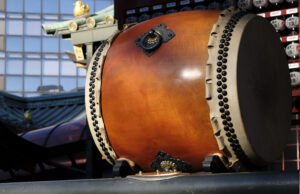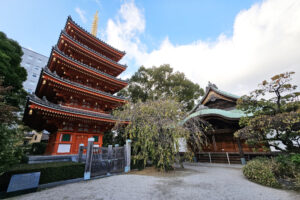In the realm of iconic imagery, few pieces have captivated and intrigued the global audience as much as "The Great Wave off Kanagawa." Created by the Japanese ukiyo-e artist Katsushika Hokusai, this masterpiece has transcended time and geographical boundaries to become a universal symbol of beauty, power, and the relentless force of nature. As we delve into the depths of Hokusai’s most famous work, we uncover the layers of meaning, technique, and history that have solidified "The Great Wave" as a timeless piece of art.
Unraveling the Mystery: The Great Wave Explained
"The Great Wave off Kanagawa" depicts a monstrous wave on the verge of breaking, with Mount Fuji serenely poised in the background. This juxtaposition of the furious sea against the tranquil mountain has fascinated scholars and art lovers alike. The wave’s claw-like forms seem to reach out menacingly towards the viewer, creating a visceral feeling of awe and fear. Despite its apparent simplicity, the composition is a marvel of balance and tension, inviting endless contemplation.
At the heart of the wave, the foam is intricately detailed, resembling the claws of mythical creatures, adding a layer of supernatural allure to the scene. The small boats, struggling against the sea’s might, symbolize the human plight against the forces of nature. Hokusai’s masterful use of perspective draws the viewer’s eye directly into the wave’s cavernous depths, creating an immersive experience. The contrast between the powerful wave and the diminutive Mount Fuji serves to emphasize the mountain’s enduring stability and permanence, despite the surrounding chaos.
Hokusai’s Vision: The Story Behind The Great Wave
Katsushika Hokusai was in his seventies when he created "The Great Wave," a period of his life when he was deeply contemplating the forces of nature and the human condition. The piece is part of a series titled "Thirty-six Views of Mount Fuji," which explores the various facets of the mountain’s significance to Japanese culture and spirituality. Hokusai’s fascination with Mount Fuji was not merely aesthetic; it was deeply rooted in his spiritual beliefs and his reverence for its timeless beauty.
The decision to juxtapose the mountain with the great wave is a testament to Hokusai’s genius in conveying complex ideas through simple compositions. He was intrigued by the transient and the eternal, themes that are recurrent in his work. "The Great Wave" can be seen as Hokusai’s meditation on the cycle of life and the impermanence of everything except the mountain, which stands unchanged by time.
A Closer Look: The Techniques Behind The Masterpiece
Hokusai’s "The Great Wave" is a woodblock print, a popular method in ukiyo-e, a genre of Japanese art that flourished during the 17th through 19th centuries. The creation of a woodblock print involves carving an image into a block of wood, inking the surface, and then pressing it onto paper. Hokusai’s expertise in this technique allowed for the meticulous detailing and vibrant colors that make "The Great Wave" so striking.
The artist’s choice of Prussian blue, a pigment that was newly available in Japan at the time, contributed to the dynamic visual impact of the wave. This rich, vibrant color contrasts sharply with the white foam and the subtle hues of Mount Fuji, creating a dramatic effect that has captured the imagination of viewers for centuries. Hokusai’s innovative use of line and color gradation to depict the rough sea’s texture and the foam’s frothiness showcases his mastery over the medium.
The Impact of The Great Wave on Global Art
Since its creation, "The Great Wave" has ridden a tide of global influence, impacting artists far beyond Japan’s shores. Its iconic status has made it a subject of study and emulation among Western artists, particularly the Impressionists, who were fascinated by its bold composition and the use of perspective. Claude Monet, Vincent van Gogh, and other artists drew inspiration from Hokusai’s work, incorporating elements of Japanese style into their own.
The print has transcended the world of art to become a widely recognized symbol in popular culture, appearing on everything from fashion to commercial products. Its enduring appeal lies in its powerful depiction of nature’s force, a theme that resonates across cultures. "The Great Wave" has become a visual metaphor for the challenges and adversities we face, symbolizing the beauty and terror of the natural world in equal measure.
Deciphering The Great Wave: Symbols and Meanings
At its core, "The Great Wave" is a rich tapestry of symbols and meanings, woven into the fabric of Japanese cultural and spiritual life. The wave represents the unpredictable power of nature, a theme that holds deep resonance in a country frequently beset by natural disasters. Mount Fuji, in contrast, symbolizes stability, endurance, and eternal beauty, serving as a beacon of hope and resilience in the face of adversity.
The presence of the boats amidst the tumultuous sea speaks to the human experience of navigating life’s storms, a reminder of our vulnerability and the need for perseverance. Hokusai’s depiction of this dynamic interplay between man, nature, and the divine captures the essence of Japanese philosophy and aesthetics, inviting viewers to reflect on the impermanence of life and the beauty to be found in transient moments.
The Evolution of Hokusai’s Artistic Journey
"The Great Wave" represents the pinnacle of Hokusai’s artistic journey, a testament to his lifelong pursuit of mastery and innovation. Born in 1760, Hokusai began painting at a young age and continued to evolve his style and technique throughout his career. His early work was characterized by traditional ukiyo-e themes, but as he matured, Hokusai’s art became more experimental, pushing the boundaries of the genre.
Hokusai was a prolific artist, producing thousands of works in his lifetime, but it was in his later years that he created his most memorable pieces, including "The Great Wave." This period of intense creativity was driven by Hokusai’s desire to capture the essence of the natural world and the human spirit. His dedication to his craft and his constant striving for perfection are evident in the precision and beauty of his work.
Unveiled: The Historical Context of The Great Wave
"The Great Wave" was created during the Edo period, a time of relative peace and prosperity in Japan that allowed the arts to flourish. This era saw the rise of the merchant class, which became a new audience for art, leading to the popularization of ukiyo-e. These woodblock prints, affordable and widely circulated, depicted scenes of daily life, landscapes, and beauty, reflecting the values and aspirations of the burgeoning middle class.
Hokusai’s masterpiece, therefore, must be understood within this socio-economic and cultural framework. "The Great Wave," with its depiction of a timeless natural phenomenon alongside a symbol of national identity, resonated with the Edo audience’s tastes and sensibilities. It also reflected the period’s fascination with the power and beauty of nature, themes that were central to Japanese art and culture.
The Great Wave: A Testament to Japanese Ukiyo-e
"The Great Wave off Kanagawa" stands as a paramount example of the ukiyo-e tradition, encapsulating the essence of this uniquely Japanese art form. Ukiyo-e, which translates to "pictures of the floating world," sought to capture the fleeting moments of life’s pleasures and beauty. Hokusai’s work embodies this philosophy, presenting a moment of natural grandeur and terror that is both transient and eternal.
The technical skill required for woodblock printing, the choice of subject matter, and the distinctive use of color and line in "The Great Wave" highlight the sophistication of ukiyo-e. Hokusai’s masterpiece has played a crucial role in elevating the status of ukiyo-e from popular art to a globally recognized and revered form of artistic expression, demonstrating the depth and complexity of Japanese visual culture.
Exploring The Great Wave’s Influence on Modern Art
The ripple effect of "The Great Wave" on modern art and culture is undeniable. Its influence can be seen in the works of countless artists across the globe, serving as a bridge between Eastern and Western art forms. The piece has inspired a wide range of artistic endeavors, from paintings and sculptures to graphic design and multimedia installations, reflecting its universal appeal and adaptability.
Modern artists have reinterpreted "The Great Wave" in various mediums, exploring its themes of nature’s power and human resilience. These reinterpretations keep the spirit of Hokusai’s masterpiece alive, showcasing its relevance in contemporary discussions about humanity’s relationship with the environment. "The Great Wave" continues to inspire new generations of artists, serving as a testament to the enduring power of visual storytelling.
The Legacy of Hokusai: Beyond The Great Wave
While "The Great Wave" remains Katsushika Hokusai’s most celebrated work, his legacy extends far beyond this single masterpiece. Hokusai’s contribution to the world of art is vast, with a body of work that encompasses a wide range of subjects, styles, and techniques. His dedication to his craft and his constant innovation have left an indelible mark on the history of art, influencing not only the trajectory of Japanese art but also the development of global artistic movements.
Hokusai’s curiosity and creative spirit drove him to explore various aspects of the natural and spiritual world, resulting in a rich oeuvre that continues to captivate and inspire. His influence can be seen in the works of modern artists and in the continued popularity of ukiyo-e art around the world. Hokusai’s life and work are a reminder of the power of artistic exploration and the timeless appeal of capturing the beauty of the natural world.
Preserving The Great Wave: Conservation Efforts
The preservation of "The Great Wave" has become a priority for art conservationists and scholars, ensuring that future generations can continue to enjoy and learn from Hokusai’s masterpiece. Over the years, the delicate woodblock prints have faced the risk of fading and damage due to exposure to light, humidity, and handling. Museums and institutions holding copies of "The Great Wave" employ state-of-the-art conservation techniques to mitigate these risks, including climate-controlled displays and the use of non-invasive diagnostic tools to monitor the print’s condition.
Efforts to digitally archive "The Great Wave" and other works by Hokusai are also underway, providing a virtual way for people around the world to experience the art in unprecedented detail. These initiatives highlight the global importance of "The Great Wave" as a cultural and artistic treasure, underscoring the need for ongoing preservation work to safeguard this iconic piece for posterity.
Experiencing The Great Wave: Where to See It Today
For those wishing to experience the majesty of "The Great Wave" firsthand, the piece is held in several prestigious institutions worldwide. The Metropolitan Museum of Art in New York, the British Museum in London, and the Tokyo National Museum are among the venues that have displayed Hokusai’s masterpiece. Viewing the print in person offers a unique opportunity to appreciate the intricate details and vibrant colors that digital reproductions cannot fully capture.
In addition to these permanent collections, traveling exhibitions often feature "The Great Wave," providing a broader audience the chance to engage with Hokusai’s work. These exhibitions offer valuable insights into the context and technique behind the masterpiece, enriching the viewer’s understanding and appreciation of this iconic piece. As "The Great Wave" continues to inspire awe and admiration, it remains a testament to the enduring power of art to connect across time and cultures.
Katsushika Hokusai’s "The Great Wave off Kanagawa" stands as a pinnacle of artistic achievement, a captivating blend of beauty, terror, and profound symbolism. Through its exploration of the forces of nature and the human spirit, "The Great Wave" resonates with viewers around the world, transcending its origins to become a global icon. As we continue to uncover the layers of meaning and technique behind this masterpiece, Hokusai’s legacy endures, reminding us of the timeless power of art to evoke emotion, provoke thought, and connect us to the universal human experience.








